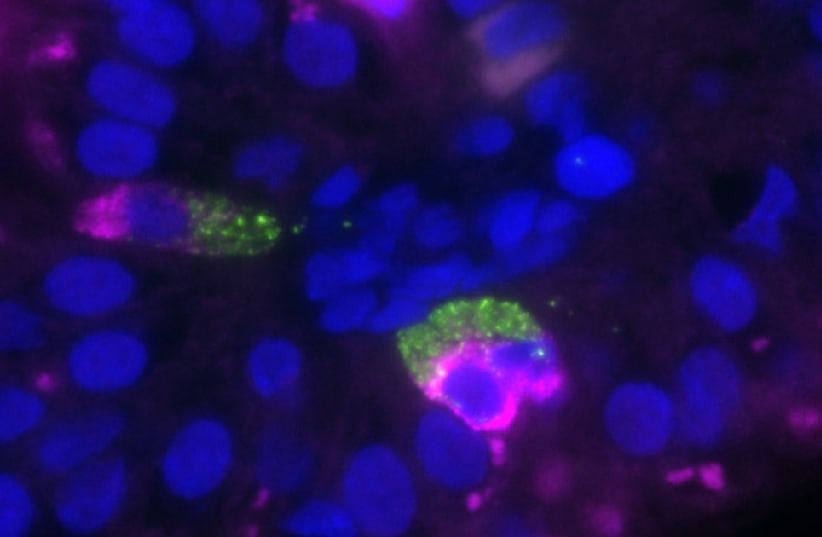Some cells in fetal intestines can produce insulin, a task that in individuals after birth can be performed exclusively by beta cells in the pancreas, new research by scientists at the Weizmann Institute of Science, Rehovot, and the Yale School of Medicine has found.
The study – which was published in the journal Nature Medicine on Thursday – could open new ways to treat diabetes, including type 1 diabetes, a chronic condition in which the body produces little to no insulin and that at the moment has no cure. Insulin is the hormone needed to allow glucose to enter cells and produce energy.
“These parallels with pancreatic beta cells make sense because the pancreas and the small intestine originate from the same tissue in the growing fetus at about the fifth week of gestation,” said Weizmann Prof. Shalev Itzkovitz.
The researchers decided to examine cells in fetuses because as they grow in the womb, the cells do not assume a specific identity and function immediately. In the second trimester of pregnancy, the intestine is already fully formed but it does not have yet to work in the same way as after the baby is born. Since its cells are not yet burdened with the task of digesting food and preventing infections, the scientists thought they might be used to fulfill different purposes.
The team profiled thousands of cells using a special technology called single-cell RNA sequencing.
Indeed, they discovered that some intestinal cells contain the same insulin gene that was believed to be present only in pancreatic cells.
The relevant intestinal cells were found to manufacture large quantities of insulin and to express an entire molecular program that could support the hormone’s activity, including genes for sensing glucose and for ensuring the insulin’s release from the cell.
However, the scientists also confirmed that the mechanisms turn off when the baby is born. The key question is if and how they can be turned on again and thereby offer new venues for treating diabetes.
“Perhaps one day this dormant program for making insulin can be awakened in people with diabetes,” Itzkovitz says. “If so, cells in the intestinal lining could make a wonderful source of insulin because they are constantly renewed. This would be a special advantage for people with Type 1 diabetes, whose insulin-making cells are continually destroyed by the immune system.”

